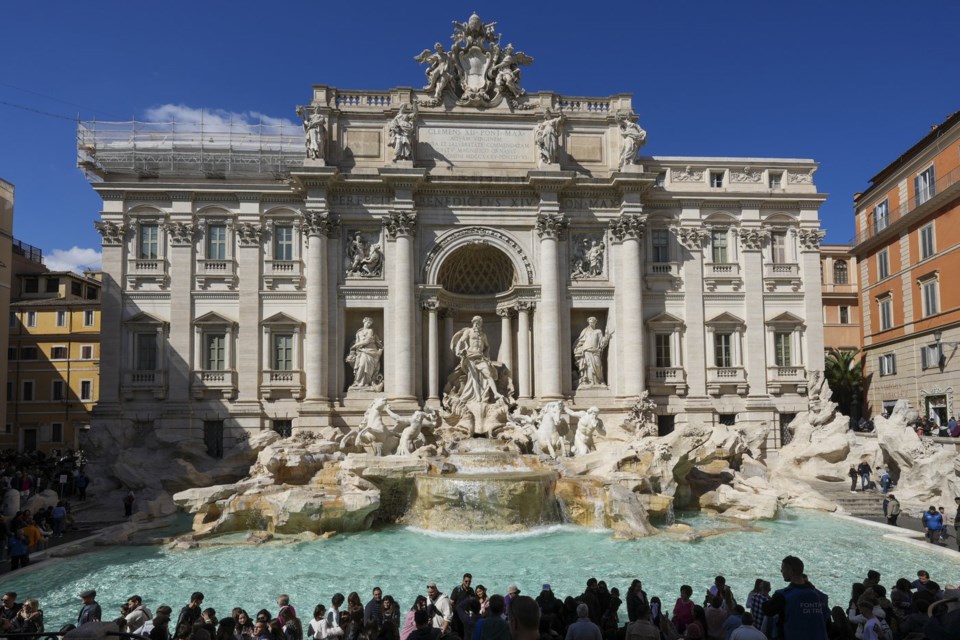ROME (AP) — The , arguably the world’s most famous, has graced screens for decades, from Fellini’s “La Dolce Vita” to Netflix’s “Emily in Paris.” Each year, millions of visitors push through Rome's narrow streets to gaze at the towering Titan god flanked by falls cascading into a turquoise pool.
Yet, they never get to venture behind Oceanus’ back to see what produces the sublime play of water in the baroque masterpiece.
Wooden doors on an adjacent street lead to the maneuvering chambers that control the fountain's water supply, coming from the Aqua Virgo — an ancient Roman aqueduct 16 kilometers (10 miles) away. Two electric pumps recycle 126 liters (33 gallons) of water per second while Rome’s water management company, ACEA, carefully monitors the flow around the clock.
This precise amount is crucial for the movement of water through the statues; a little more or less, and it wouldn’t work, said Davide D’Alonzo, ACEA’s manager for the area.
The modern maneuvering chamber features metal tanks and lighted panels. In the original, arched chamber, water audibly rushes through a thick pipe and there is a functional, 18th-century hydrometer to gauge the fountain’s water level.
A large, rudimentary spreadsheet on the wall displays the names of rich Roman families whose homes received water from the chamber long ago; when they fell behind on their payments, their supply was cut off.
The chamber's grated windows grant views out over the fountain and its many visitors — all of whom are oblivious to its hidden waterworks. They into the water, a hopeful gesture based on a legend that it guarantees their return to the eternal city.
Trisha Thomas, The Associated Press




